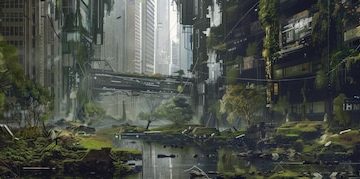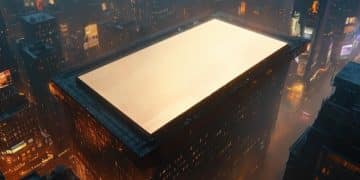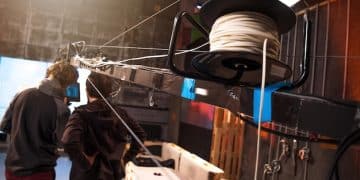CGI Overload? Examining Visual Effects in Recent Blockbusters
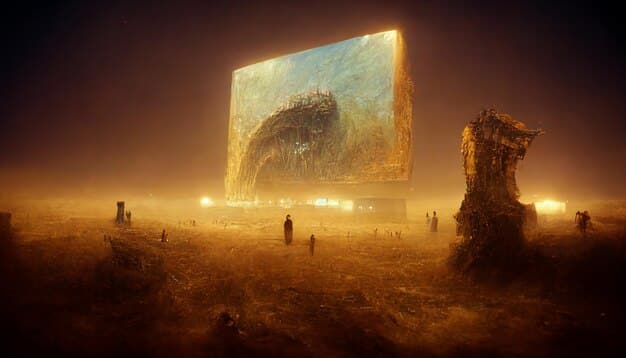
The overuse of CGI in recent blockbusters raises questions about its impact on visual storytelling, with some arguing it detracts from realism and emotional connection.
Has CGI taken over Hollywood? We delve into whether recent blockbusters are leaning too heavily on computer-generated imagery, impacting the authenticity and audience experience.
CGI: A Blessing or a Curse for Modern Cinema?
Computer-generated imagery (CGI) has become a mainstay in modern cinema, transforming how we experience movies. But is it possible to have too much of a good thing? The debate over is CGI overused? Examining the visual effects in 3 recent blockbusters rages on, with many viewers questioning whether the over-reliance on digital effects is detracting from storytelling and overall cinematic quality.
Let’s explore how CGI is used in recent blockbusters and whether the technique is truly enhancing – or diminishing – the magic of cinema.
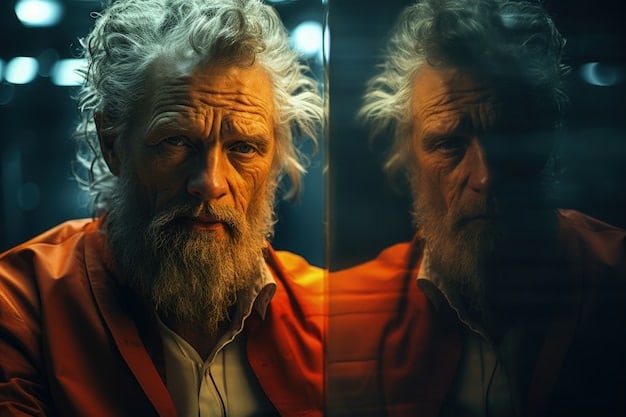
Blockbuster Case Study 1: “Eternals” (2021)
“Eternals,” a 2021 entry into the Marvel Cinematic Universe, featured extensive CGI to bring its cosmic characters and their powers to life. From the intricate costumes to the sprawling celestial landscapes, CGI was instrumental in creating the film’s unique visual identity. Let’s analyze whether the technology served the story or overshadowed it.
Visual Spectacle vs. Emotional Depth
Marvel movies are known for their visual spectacle, and “Eternals” certainly delivered on that front. The sheer scale of the Deviants and the Eternals’ abilities required heavy CGI use. However, some critics argued that the constant barrage of visual effects overshadowed the emotional core of the story. Did the film rely too much on spectacle at the expense of character development?
The Controversy of De-Aging and Digital Doubles
Another common use of CGI in modern blockbusters is de-aging actors and creating digital doubles for complex stunts. While these techniques can be impressive, they can also fall into the “uncanny valley,” where the characters look almost real but still slightly off-putting. “Eternals” featured some of these techniques, and the results were mixed.
- De-aging can distract from the performance if not done perfectly.
- Digital doubles allow for impressive stunts but can lack the weight of practical effects.
- Over-reliance on these techniques can create a sterile, artificial look.
Ultimately, “Eternals” presents a prime example of how CGI can both enhance and detract from a film. The movie’s visual presentation was undoubtedly impressive, but questions arise regarding the necessity and balance of its effects.
Blockbuster Case Study 2: “Avatar: The Way of Water” (2022)
James Cameron’s “Avatar: The Way of Water” (2022) was lauded for its groundbreaking visual effects that created the breathtaking underwater world of Pandora. The movie pushed the boundaries of CGI, offering audiences a glimpse into an alien ecosystem never before seen with such realism. Is this the gold standard for CGI or a case of too much?
The Immersion Factor
The “Avatar” sequel took audiences on a journey into a fully realized world, and the CGI was crucial to creating that immersion. The bioluminescent flora, the marine creatures, and the water effects themselves were all rendered with incredible detail. The film demonstrated how CGI can be used to build vast, believable universes.
Performance Capture and Actor Integration
One of the keys to “Avatar’s” success was its use of performance capture technology, which allowed the actors’ performances to be translated into the CGI characters with nuance and emotion. This integration of human performance and digital effects helped to bridge the uncanny valley and create characters that audiences could connect with.
In “Avatar: The Way of Water,” the line between reality and CGI becomes blurred. The seamless integration of effects ensures that the audience is captivated and transported to another world, showing the potential of CGI when executed with precision and artistry.
Blockbuster Case Study 3: “The Flash” (2023)
“The Flash” (2023) was highly anticipated but faced criticism for its CGI quality, particularly in scenes involving the titular character’s super speed. The film serves as a cautionary tale about the potential pitfalls of relying too heavily on computer-generated imagery without proper refinement.
Problems with Unfinished CGI
Among the most common complaints about “The Flash” was the frequently unfinished nature of the CGI. Scenes that should have been visually impressive often looked rushed and poorly rendered. This resulted in a jarring disconnect between the visual elements and the narrative, hindering the audience’s immersion.
The Impact on Authenticity
Rushed CGI can also strip the film of its authenticity. Many viewers found the characters and environments unconvincing due to the lack of detail and attention to texture. This not only affected the film’s overall aesthetic, but also made it difficult for the audience to fully invest in the story and the characters’ emotional arcs.
- Poor CGI highlights the artificiality of the effects.
- It detracts from the overall viewing experience.
- It undermines the credibility of the film’s world.
In conclusion, “The Flash” illustrates the importance of polishing CGI to ensure it enhances, rather than detracts from, the storytelling. The critique surrounding its visual effects underscores the argument that quality is paramount in the creation and integration of CGI in blockbuster films.
The Role of Practical Effects in Balancing CGI
Practical effects, such as physical props, makeup, and stunts, were once the cornerstones of filmmaking. Today, they often take a backseat to CGI. But there’s a growing argument for integrating practical and digital effects to achieve a more balanced and realistic look.
Enhancing CGI with Practical Elements
One strategy is to use practical effects as a foundation for CGI. For example, building a physical set and then augmenting it with digital extensions can create a more believable environment. Similarly, using makeup and prosthetics as a base for digital enhancements can result in more convincing character designs.
Restoring the Tangible Feel
Practical effects provide a tangible feel that CGI often struggles to replicate. Seeing a real explosion or a physical stunt can create a visceral reaction in the audience that a digital effect can’t match. Combining practical and digital effects can restore that sense of realism and weight to the action.
Filmmakers are increasingly recognizing the value of practical effects in providing grounding and authenticity to visual narratives. This blend allows for a more immersive and believable cinematic experience, bridging the gap between what is real and what is digitally fabricated.
The Future of Visual Effects: Finding the Right Balance
As technology advances, CGI will undoubtedly become even more sophisticated. The challenge for filmmakers will be to use these tools responsibly and artistically, finding the right balance between spectacle and storytelling.
AI and the Evolution of CGI
Artificial intelligence (AI) is poised to revolutionize visual effects, offering new ways to create realistic and dynamic imagery. AI-powered tools can automate complex tasks such as motion capture and environment creation, allowing artists to focus on the creative aspects of the process. However, the ethical implications of AI in filmmaking must also be considered.
The Importance of Artistic Vision
Ultimately, the success of visual effects depends on the artistic vision of the filmmakers. CGI should be used to serve the story, not to replace it. By prioritizing character development, emotional depth, and narrative coherence, filmmakers can ensure that visual effects enhance the overall cinematic experience.
As the industry evolves, the true artistry will lie in knowing when and how to deploy these technologies to create stories that resonate and captivate audiences. This conscientious method can ensure that CGI continues to be a tool of cinematic innovation, rather than a detriment.
| Key Point | Brief Description |
|---|---|
| ✨ Visual Spectacle | CGI enhances movies with stunning visuals. |
| 🎭 Emotional Depth | Too much CGI can overshadow character emotion. |
| 🤖 Unfinished CGI | Rushed CGI detracts from immersion and authenticity. |
| 🎬 Practical Effects | Blending CGI with tangible elements enhances realism. |
FAQ
▼
CGI stands for Computer-Generated Imagery. It’s the use of computer graphics to create special effects in movies, television, and other media. It allows filmmakers to create visuals that would be impossible or too expensive to achieve with traditional methods.
▼
CGI is prevalent because it provides filmmakers with greater flexibility and control over visual elements. It helps to create scenes and elements that would be impractical or impossible to achieve using practical effects alone, saving time and resources.
▼
Practical effects are visual effects achieved through physical means rather than computer generation. They include techniques like makeup, prosthetics, physical props, models, and real explosions. These effects are created on set during filming.
▼
Effective balance involves using practical effects to ground CGI elements in reality. Filmmakers can use real sets and props enhanced with digital extensions. This blend results in visuals that feel both realistic and spectacular, creating a more immersive experience for audiences.
▼
AI is set to revolutionize CGI by automating complex tasks, such as motion capture and environment creation. It allows artists to focus more on creative aspects. AI’s integration will lead to more realistic and dynamic imagery, enhancing the overall visual quality of films.
Conclusion
As illustrated by examining the visual effects in “Eternals”, “Avatar: The Way of Water”, and “The Flash,” the question of is CGI overused? Examining the visual effects in 3 recent blockbusters remains pertinent. While CGI can create breathtaking spectacles and immerse audiences in fantastical worlds, its overuse or poor execution can detract from storytelling and authenticity. The most effective approach involves a balanced integration of CGI and practical effects, guided by artistic vision, to enhance the cinematic experience.
